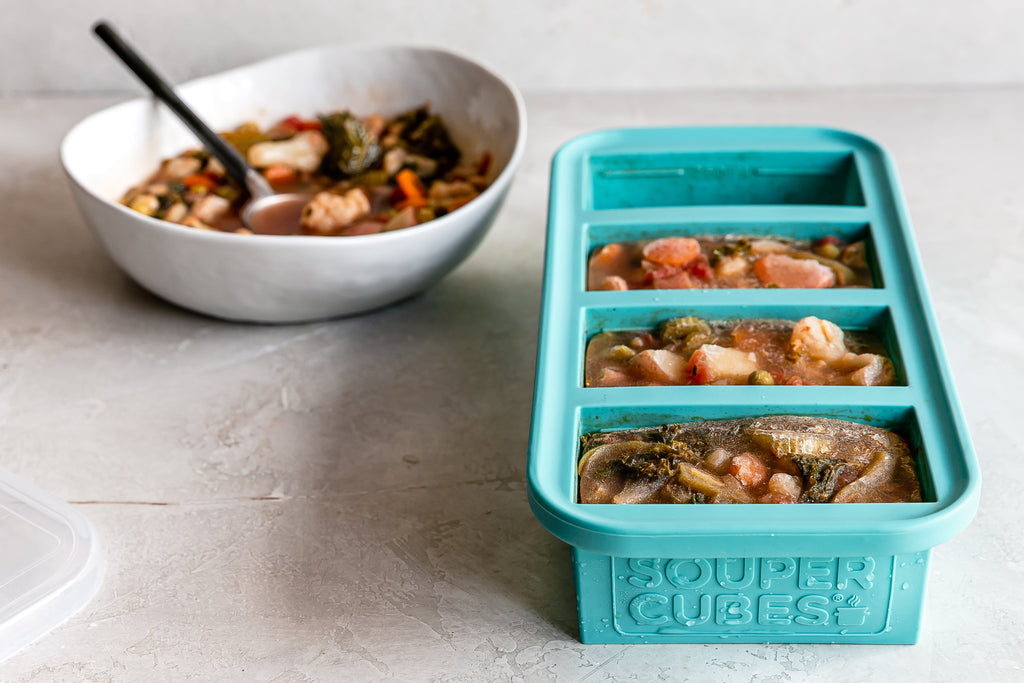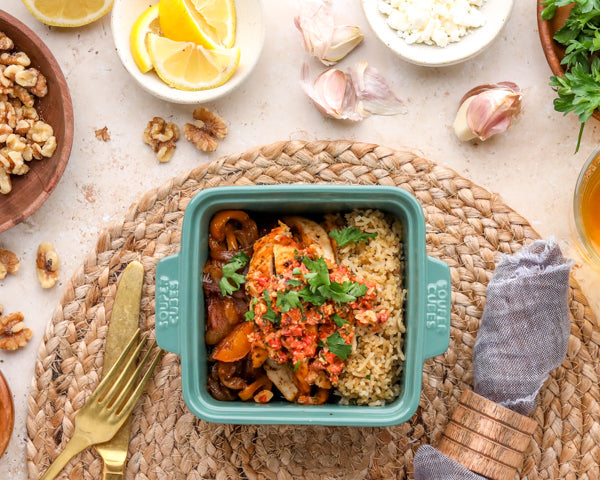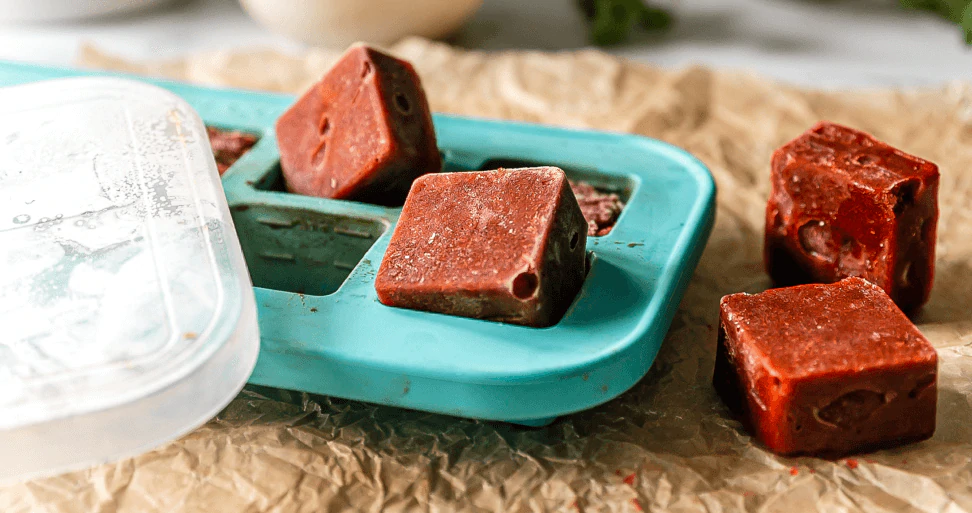Have you ever come home from a long day at work ready to warm up a nice bowl of soup from your freezer? Except instead of a tasty and satisfying meal, your soup is freezer burnt, clumpy, or tastes a bit… off. Or, maybe you’ve frozen it in a large container and now need to eat that soup for several days?
Freezing soup isn’t always as straightforward as you think it should be. Sometimes, the method used can produce soup that just doesn’t taste right. We are here to help!
In this blog, we will dive into how to freeze and reheat soup properly so you can have the perfect weeknight meal next week, next month, or even a couple of months from now. We have also included some frequently asked questions, so make sure you read this article until the end to get all of your questions answered. Ready to jump in? Let's get into it.
Tips to Help You Successfully Freeze & Thaw Your Soup
There are many tips and tricks that come along with perfecting your freezing and thawing process. If you've just made a big batch of soup, follow these tips so you can freeze and thaw your soup successfully.
Some Soups Freeze Better Than Others
When you’re freezer meal prepping soup, it’s important to know which soups freeze the best. For example, tomato soup is one of the best soups to freeze, as it typically tastes the same reheated as it does fresh. Unfortunately, certain soups don’t freeze the same way. Here are a few types of soup that can clump, become runny, or lose their flavor after thawing:
- Cream-based soups
- Soups with pasta noodles
Keep in mind that creamy soup with milk, coconut milk or heavy cream might separate while frozen, making it hard to reintegrate. With that being said, you can still freeze these soups; they may just lack the same flavor or texture. Always reference the recipe and if it specifically states it’s been tested for freezer meal prep. For instance, our creamy potato leek soup reheats really well even after it’s been frozen!
There are also ways that you can make your favorite soups more freezer-friendly. For example, for soups with pasta noodles, you might want to freeze the soup without the noodles, then add fresh noodles to the soup when you thaw it. This way the noodles won’t get overcooked or soggy. You may also prefer to add slightly undercooked noodles to your soup before freezing it so they will finish cooking when you reheat the soup. It’s all about experimenting and finding what works best for you!
The Freezer-Safe Container You Use Matters
One common mistake people make when freezing their soup is choosing the wrong soup container. Storage containers such as glass containers or plastic containers are susceptible to cracking or shattering under the freezing temperatures of your freezer. The best freezer-safe containers for soup are made of a flexible material, so it can contract and expand as it warms and cools, and is airtight, like Souper Cubes®. These containers are durable silicone freezer food trays purpose-built for freezing food in perfect portions.
Another common mistake is that people will freeze their soup in a large container, forcing them to reheat more than they want to eat for their next meal. This means they’ll either have to eat the soup multiple meals in a row or throw it away. Luckily, Souper Cubes® are available in various portion sizes, from 2 tbsp to 2-cup trays, so you can freeze and reheat the exact portions you want to eat.
Cool Soup Quickly Before Freezing It
This may be something you already do, but if not, it's time to start! It’s important that you cool your soup as quickly as possible after it’s been cooked. Putting a hot container of soup directly in the freezer can raise the temperature of your freezer, causing surrounding food to thaw. At the same time, leaving your food out on the counter for too long can lead to the development of food-borne bacteria.
Here are a few methods to help you cool your soup quickly:
- Divide your soup into smaller containers: Soup will take a lot longer to cool in a large stockpot than it will in several smaller containers.
- Put your food into silicone containers (like Souper Cubes): Silicone doesn’t retain heat like metal does, which will allow your soup to cool faster.
- Put your pot of soup in ice water: Fill your sink with ice water and allow your pot to cool in the ice bath!
- Put a water bottle full of ice in the soup: Fill a water bottle with ice and place it in the pot of soup.
Freeze Soup in The Portions You Want to Eat it
When you’re ready to freeze your soup, it’s important to freeze it in the portions you will eat it. If you make tomato soup and put it all in one large container, you will have to reheat the whole batch, even when you just want a single serving. If you want to freeze soup for your individual dinner, ensure you are freezing your soup in individual servings.
Don’t Freeze Your Garnishes
Fresh garnishes like cheese, tomatoes, onions, or cilantro will add additional freshness and taste to your meal. A fresh side dish like a side salad can also help balance out your meal!
How to Freeze Soup

After you've made your batch of soup, follow these directions for freezing and reheating your meal. Let's dive into the 4 step process of freezing your soup.
1. Cook Your Food
When cooking soup for your freezer, it’s best to choose a freezer-friendly recipe. As we already discussed, some soups freeze better than others and there are often ways to make certain soups more freezer-friendly.
Some of our favorite freezer-friendly soup recipes include:
2. Store Soup in Freezer Containers
If you're storing your soup in Souper Cubes®, pour your soup into your desired portions so you have the perfect portion available when you are ready to eat. Safely pour your soup into your freezer container and seal the container with an airtight lid to help prevent freezer burn.
3. Store Soup In Your Freezer
When freezing soup, try to place it on a flat surface in your freezer. This will prevent any leakage and keep your freezer clean.
4. Transfer Your Soup to a Freezer-Safe Bag
Once your soup is frozen, it's time to transfer it to a freezer-safe bag, like Ziploc, ReZip, or Stasher bag. You can also store your frozen soup in vacuum-sealed bags for longer-term storage. Freezer space can be hard to come by, and keeping your Souper Cubes® trays in the freezer may take up your valuable freezer space. To do this, pop your soup out from its portioned cubes and place them directly into a Ziploc or vacuum-sealed bag. Once the food is transferred, ensure it is 100% sealed, and place it back into the freezer. Check out our Chest Freezer Organization Tips For Your Souper Cubes Meals blog post to learn more about organizing food in your freezer.
At this point, you can put your Souper Cubes® trays in the top rack of your dishwasher for easy clean-up.
How to Reheat Frozen Soup

It’s time to reheat and eat your delicious soup! Follow the directions below.
1. Thaw Your Soup
Before you reheat your soup, you may want to thaw it to speed up the cooking time. However, it’s not necessary to thaw your soup before reheating it, and you may choose to reheat your soup from frozen.
To thaw your soup, we recommend putting it in the refrigerator overnight or placing it in a bowl or pot on the counter for an hour.
If you have frozen your soup in Souper Cubes, we recommend popping the soup cube out and placing it in a bowl or pot for thawing. To do that simply place the tray on the counter for 4-5 minutes, pop off the lid using the tab, and then push the bottom of the frozen cube so it pops out of the tray.
2. Reheat Your Soup
When it comes to reheating your soup, you may wish to reheat it on the stovetop or in the microwave — the choice is up to you!
If you’re reheating frozen soup on the stove, make sure to use medium-low heat. High temperatures can cause your soup to burn before it has completely thawed. As you’re cooking your soup, it’s important to stir it frequently. You can also add a couple of tablespoons of water or broth until your soup is fully thawed.
If you’re reheating soup in the microwave, start with 2-3 minutes, stir the soup, and then reassess how much longer it needs until it reaches your desired temperature.
3. Add in Additional Ingredients
Once your frozen soup is thawed, reheated, and ready to serve, it’s time to pour your soup into your desired bowl (if you reheated it in a pot) and sprinkle that yummy garnish on top. Now, serve and enjoy!
Commonly Asked Questions About Freezing and Thawing Soup

By now, you know there are many tips and tricks to freezing and thawing soup. Beyond tips, we also wanted to address some commonly asked questions about freezing and thawing soup. The following are questions and answers to some of the most frequently asked questions.
How long can you freeze soup?
There is no set time limit on how long you can freeze soup. However, we recommend you freeze soups for a maximum of four months in the proper freezer-safe container.
This will ensure your soup doesn’t have freezer burn, tastes delicious, and keeps its original consistency and texture. If you want to freeze soup for longer than four months, it’s best to transfer your frozen soup into vacuum-sealed freezer bags. As long as your food is consistently frozen, the length of time it is in your freezer will only potentially impact the taste and flavor, but not the safety of eating it.
How do you freeze soup without getting freezer burn?
The best way to prevent freezer burn is to use containers that have airtight lids. Without airtight lids, oxygen can creep into your containers and freezer burn your food. Freezer burnt food is still safe to eat, it just won’t taste as yummy.
How do you freeze soup in individual portions?
The best way to freeze your homemade soup in individual portions is to use Souper Cubes®. Souper Cubes® trays come in multiple sizes, including 2 tbsp, ½ cup, 1 cup, and 2 cups, making it easy to pop out your desired portion without having to reheat your entire batch.
Prep Your Perfect Weeknight Meal With Souper Cubes®

Now that you know all of the tips and tricks of freezing soup, it’s time to give it a try! Before you run to your kitchen and start freezer meal prepping, make sure you have all the necessary ingredients and tools. Purchase your Souper Cube trays today so you can thank yourself later.










We would love to hear your ideas or better yet, post a photo of your cubes organized in our Freezer Meals & Recipes Facebook Group!